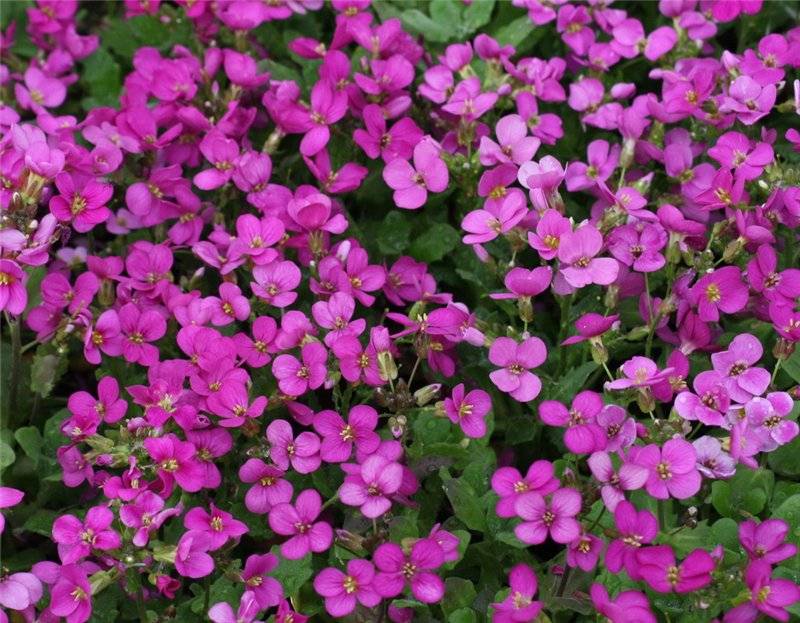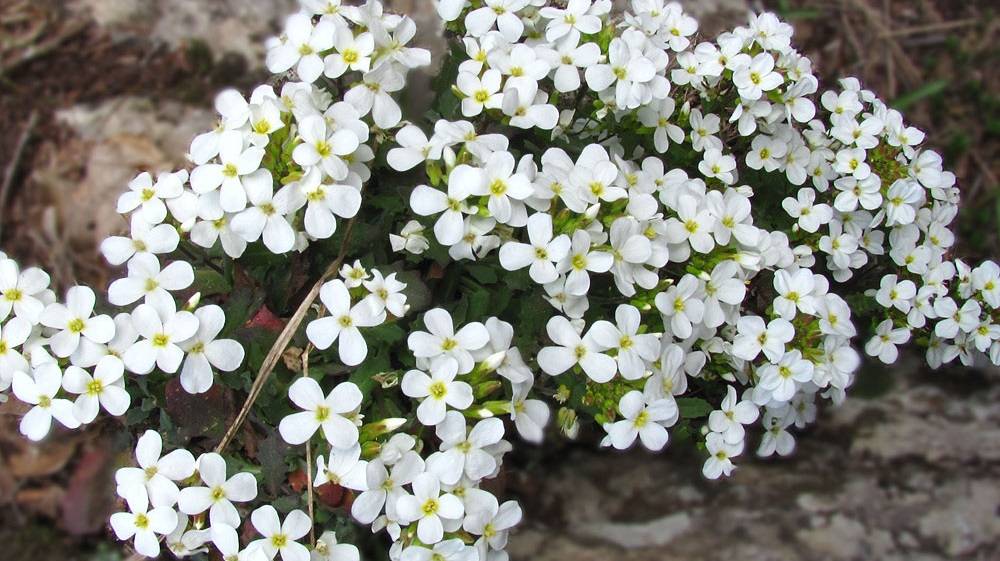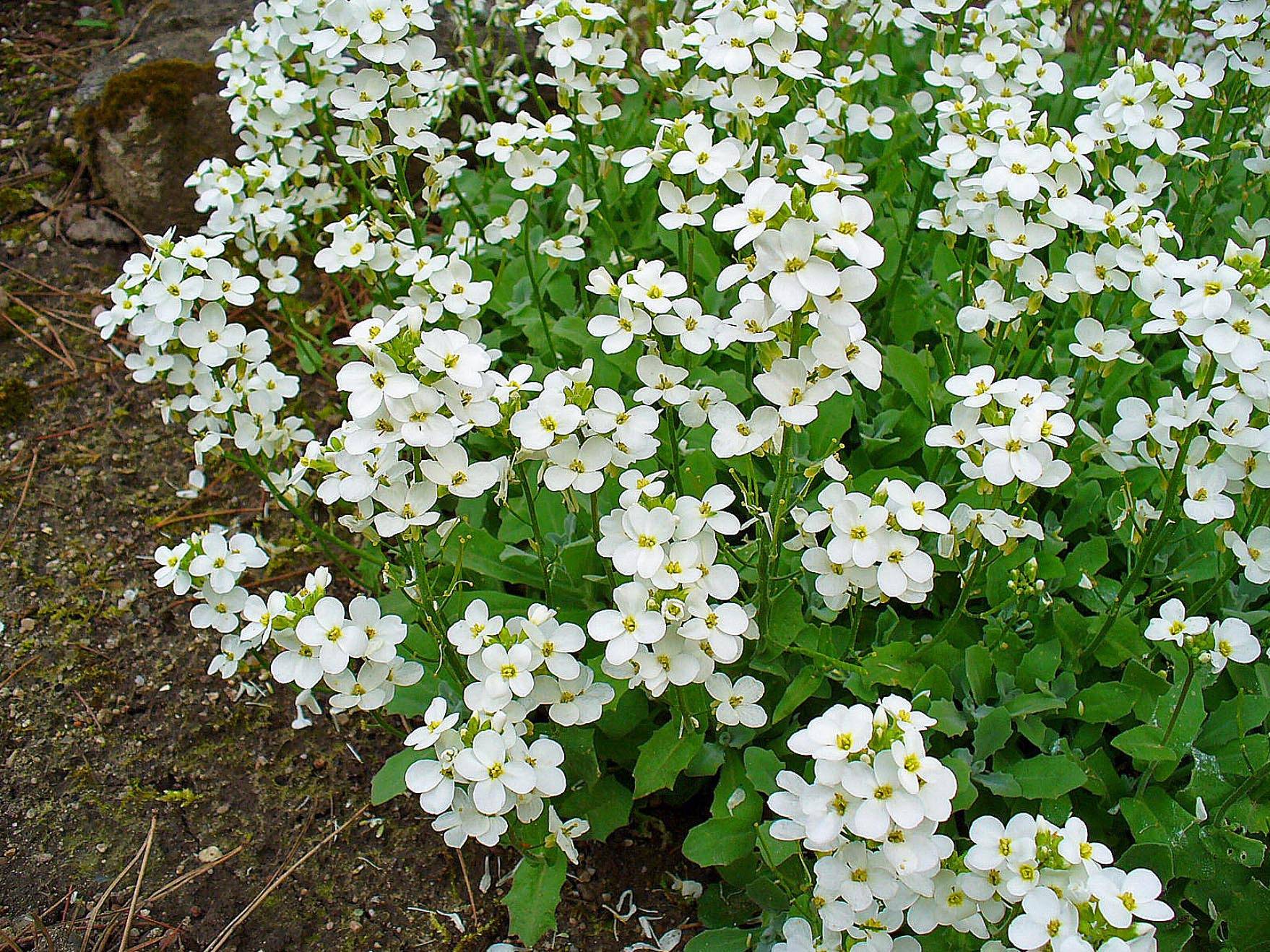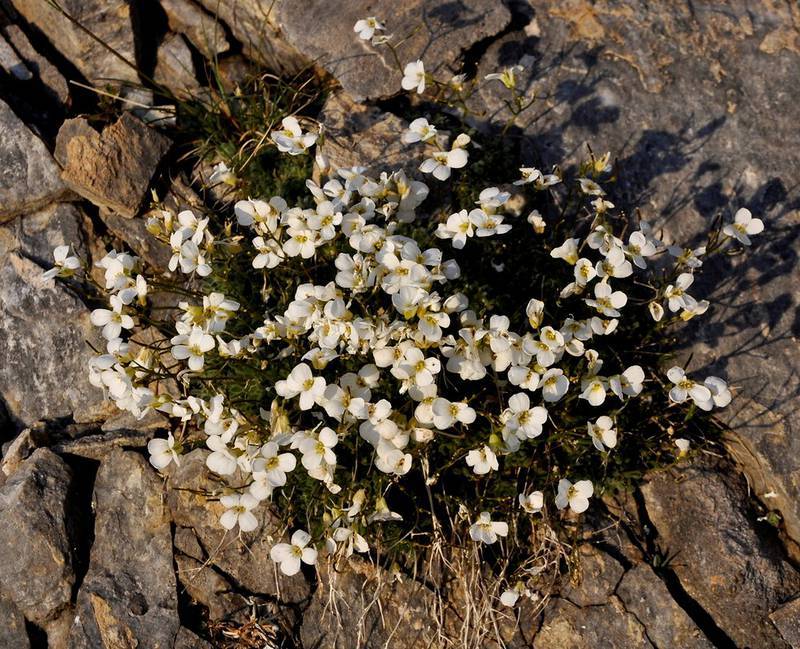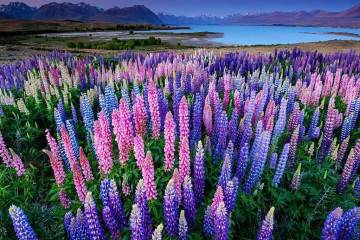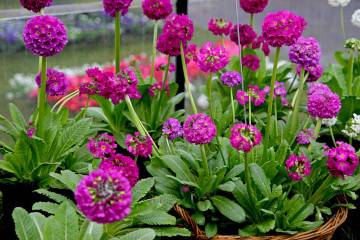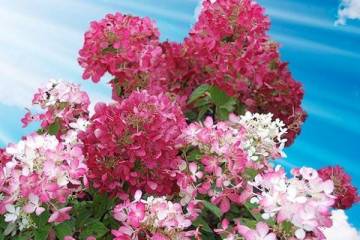Arabis perennial - how to grow and care
Content:
Arabis or rezuha is a perennial variegated shrub from the cruciferous family. At the moment, there are more than a hundred species of this plant. The Arabis flower can grow both in temperate climates and in the tropics. It is often used to design flower beds or borders.
The main types of perennial arabis
There are many species of this plant, differing in the structure and shades of flowers and leaves. Below we will consider the most popular of them.
Arabis Caucasian
Arabis Caucasica reaches a height of 30 cm. Its shoots root quite easily. The leaves are small with large denticles at the edges. Flowers reach 1-2 cm in diameter, they are collected in spectacular tassels 7-9 cm long. Blooms in June, flowers stay on the plant for about a month. The fruits look like oblong cones.
Popular varieties of Caucasian rezuha:
- Arabis Variegata. The leaf plates of this variety have beautiful yellow edges.
- Rosabella is distinguished by large, bright pink inflorescences.
- Arabis Caucasian Little Treasure Deep Rose grows very quickly into a bright blanket of green leaves with a large number of small buds of different colors: pink, purple, white and others. The variety is unpretentious, requires minimal attention.
- Coccinea has bright purple flowers.
- Lotti White is the most popular variety of Caucasian rezuha, with a short length of about 13-16 cm. Leaves are small, green in color. White flowers with a diameter of no more than 16 mm. It is adapted to frost and can withstand up to -20.
Alpine Arabis
A perennial shrub with an average height of about 30-36 cm. The shoots are branchy, nestle against the soil, like thin whips that are resistant to winter cold. The leaves are oblong, white or pink flowers up to 10 mm in diameter are collected in inflorescences up to 5-6 cm in length. It begins to bloom in April or May. Flowering lasts up to 30 days. Fruits appear in July.
One of the types of alpine rezuha is Arabis White or Schneeshaube. It grows up to 30 cm in height and fits perfectly into all kinds of color compositions.
The pink variety of the alpine crusher reaches a height of about 25 cm, flowers - up to 20 mm in diameter. Flowering begins in April and lasts 25-30 days.
Arabis Sunny Bunny
This variegated perennial begins to bloom in early spring. A bit picky about the soil. It should not be waterlogged and preferably sandy. Prefers sunny locations. It grows to approximately 36 cm in height.
Arabis by Ferdinand of Coburg
The height of this plant is only 4-7 cm. On thin shoots there are solid rosettes of variegated leaves. Ferdinand's Arabis is easy to reproduce. Basically, it is propagated by cuttings. The flowers of this Arabis are fragrant, up to 0.6 cm in diameter.
Arabis pink
A perennial plant, reaching a height of 35 cm. It got its name because of its characteristic pink flowers. The stems quickly spread along the ground, forming a green blanket. He is not picky about the soil, so it can be planted in a garden with a meager composition of the earth.
Arabis arrow-shaped
Herbaceous shrub 25-40 cm high. The plant is covered with rough hairs. Its leaves are like arrows. White buds 0.6 cm in diameter. The flowering and fruiting period is from June to August. Most often it can be found near water bodies in limestone soil.
Ciliated dezuha
It grows no more than 9 cm in height and about 25-30 cm in width. It has dark green leaves. The buds are pink or purple. Blooms from May to June. A very whimsical Arabis variety, it loves heat and does not tolerate cold and waterlogging.
Features of growing perennial Arabis
In open soil, the plant should be planted in late May and early June. When planting, make sure the plant has more than 3 leaf blades. Better to plant in a bright, sunny place, blown by the wind. When grown in shady areas, it will be difficult to achieve abundant flowering.
For planting perennial Arabis, loosened, not waterlogged soil with a large amount of minerals is suitable. You can add small stones, sand to the soil. Up to 3-4 bushes are usually planted in one hole. After planting, you need abundant watering. Arabis flowers appear only the next year.
Reproduction methods
Arabis can be grown from seed, using cuttings and dividing the bush
Growing from seeds
It is not at all difficult to grow Alpine Arabis from seeds. The seed can be purchased at specialized flower shops or at the flower market. At home, seeds are usually sown in October for the winter, and seedlings are planted in early April.
Planting method:
- The pots are filled with soil made from garden soil, sand and small stones.
- The seeds are immersed 0.5 cm into the ground.
- The pots are exposed in a room with an air temperature of +20 degrees.
- For greater germination capacity, containers can be covered with polyethylene.
When the first shoots appear, the film should be removed. You also need to reduce watering.
Dividing the bush
The plant is divided when a large number of roots are formed. This can be done in early spring or in August after flowering ends. The bush must be dug up, divided into parts containing growth points and a large number of roots. The cuts are sprinkled with charcoal and then the bushes are planted back into the soil.
Cuttings
Terry varieties that do not produce seeds are usually propagated by cuttings, as well as very rare varieties of rezuha.
For cuttings, a leaf plate with a heel is used, which is part of the cambial layer. It is from this layer that young roots grow. You can also take the top 10 cm of the stem.
Cuttings are harvested at the end of flowering. They are planted in loose soil at a slope and covered with a transparent cap. When the turgor of the upper leaf plates is restored, the cuttings can be transplanted into open ground.
Plant care
The rezukha does not need additional feeding, it takes all the necessary substances from the soil. The exception is alpine species, which can be fed with limestone fertilizers.
The widespread Arabis needs regular pruning. If parts of the plant go beyond the boundaries of the flower bed, then they are removed. But basically only diseased parts and shoots that have already faded are removed.
Seed collection
Arabis seeds should be harvested on a sunny day, so they will have a high germination rate. The seed boxes are cut and then hung in a ventilated area until they dry out. The seed should be stored in a dry, dark place.
Diseases and pests
Arabis is resistant to various diseases and pests. But it can still pick up, for example, a viral mosaic, which manifests itself in small spots of red color, gradually growing until they come together. Unfortunately, it cannot be treated, so the infected bush must be removed, and the place on which it grew should be treated with a solution of potassium permanganate.
Of the pests, a red-colored flea can be found. To get rid of it, it is best to spray the bush with Karbofos or Biolin.
Preparing for winter
Usually, the plant can withstand air temperatures up to minus 5-7 degrees. At a lower temperature, the arabis must be covered, but before that, the stems must be cut so that only 2-4 cm are on the surface.In severe frosts and the absence of snow, the plant is covered with leaves or special material that prevents the appearance of rodents that can break their holes under the bushes arabis.
The use of arabis in landscape design
Arabis is often used by landscape designers. This is due to the fact that the plant has a small stature, bright flowers, leaves of the original form. It is planted in order to fill empty areas of flower beds and form beautiful meadows. Most often, they find a place for him between large plants or on alpine slides. In a short period of time, the rezuha braids the stones, so the flower beds and hills take on a very spectacular look.
Arabis is an unpretentious plant, therefore, it does not cause much trouble for flower growers. The main thing is that the soil is not very waterlogged, otherwise the plant may die. Otherwise, despite its small size, Arabis is a very spectacular plant that can decorate any garden.
